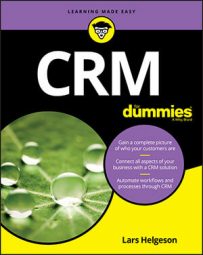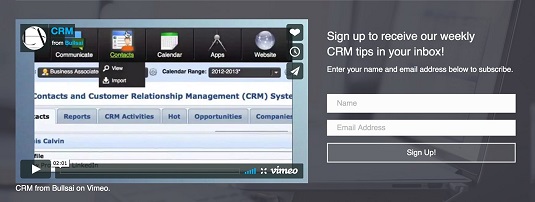This example shows how a CRM software company traces the journey of a lead from initial contact to becoming a customer. In this case, each phase of the journey can be seen, from landing on the demo request page, to getting a demo, to getting a trail, and becoming a client.
When you think about the story arc of bringing your leads toward becoming clients, start with a reason, a purpose. Getting people interested in whatever you’re selling (even if you aren’t selling a physical product or a defined service) requires you to step into their minds and see things from their points of view.
Put yourself in your leads’ shoes. Think about your buyers and imagine them clicking an ad, finding you in search results, hearing about you from someone they know, or reading about you in an informational article. The person ends up on your website, and then … what?
Maybe they land on your homepage, maybe they land on an inner page, or maybe they land on a dedicated landing page (a page you built to address a specific market or a campaign). Think about what that person is there for. Usually the first inquiry is about gathering information, but he wants to know more. Your ability to create the desire for more information is what will convince that potential client to progress on your buyer journey.
Most of the pages where you control content need a call to action (CTA). This call to action is usually in the form of a button that clearly tells the visitor what to do. Common CTAs are “click here to learn more,” “click here to get a free whitepaper,” “email us to get demo,” or other action-related phrases. This image shows a call to action; the contact info leads give goes into the CRM and the lead starts through the funnel.
Capturing data for your CRM with effective forms
With digital marketing, the use of forms is the key to capturing information and filling your funnel with qualified leads. Use these forms to gather information in exchange for offering the lead some tangible incentive (for example, a discount, a downloadable whitepaper, or access to more information).As your leads progress through your funnel, your relationship with them changes. New leads are looking for high-level information, so they can make the decision to investigate your products or services further. As they learn more about you and what you offer, the relationship becomes one of building trust and confidence that you can deliver on what you promise. Accordingly, your messaging needs to change.
If you have a complex product, it may make sense to provide long-form educational content to leads. Detailed e-books or blogs may be more relevant, particularly if you sell something technical, where product performance is important to your leads.
When you build forms, be mindful of who your webpage visitor is and what that visitor is looking for. Always ask for the minimum amount of information, to make it as easy as possible for someone to fill out the form.
Make sure that when you have a landing page, the landing page’s content matches the corresponding ad. If someone clicks an ad because you offer a special product, information about that product should be on your landing page. Coordinate the ad and landing page with your website manager and the people who manage your ad campaigns.
Some people like using pop-up ads, pop-under ads, and other intrusive methods of encouraging people to fill out forms. While some data suggests a higher rate of people filling out forms, there is a corresponding increase in the annoyance factor of your webpage visitors. This risk may be acceptable to you, depending on your overall strategy, but be sure to test to see whether lead quality goes up or down, depending on the kind of forms you use.


